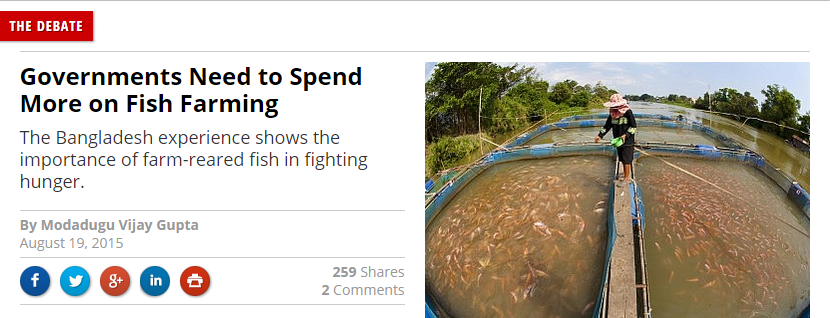An article written by Dr. Modadugu V. Gupta, one of the inaugural laureate of the Sunhak Peace Prize

Efforts to reduce malnutrition have resulted in 200 million fewer hungry people worldwide since 1990. But 805 million people still deal with chronic hunger every day. In the fight against poverty and malnutrition, smart nations have found success by developing self-sufficient food sources, promoting economic growth and engaging women in business enterprises.
A leading example is Bangladesh, which used this formula to cut chronic hunger by more than half since 2000, according to the United Nations. The U.N. also says that Bangladesh has reduced the number of underweight children by 25 percent.
Just four decades ago, Bangladesh was a newly formed, impoverished nation facing high levels of extreme hunger when floods and famine destroyed what few resources it had. With desperately high demand, imported food grew scarce and 1.5 million people died from famine and sickness. Those terrible times forced Bangladesh to take action to increase its food security and self-sufficiency.
In the 1980s, Bangladesh started to build small-farm irrigation systems, increasing rice production and, most important, developing cutting-edge aquaculture practices. It also identified more than 1 million abandoned ponds, roadside canals, ditches and seasonally flooded pools as potential sources of fish production. Bangladesh, it turned out, was full of small bodies of water – some as small as a backyard swimming pool – that had the potential to become mini-fish-factories, churning out protein and income.
By helping local residents develop effective aquaculture techniques, Bangladesh now has more than 500,000 previously unused seasonal ponds teeming with fish. These farms helped boost Bangladesh’s fish yields eight-fold in just the first year. Fish production grew at a 300 percent rate during the 1990s.
[See the original article]
http://thediplomat.com/2015/08/governments-need-to-spend-more-on-fish-farming/